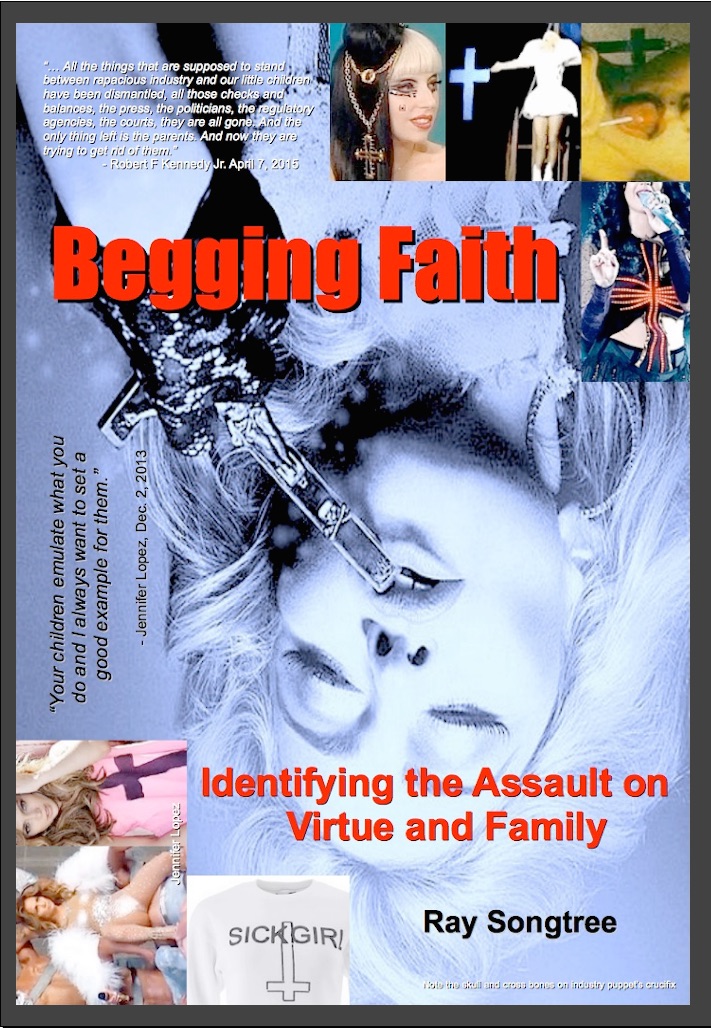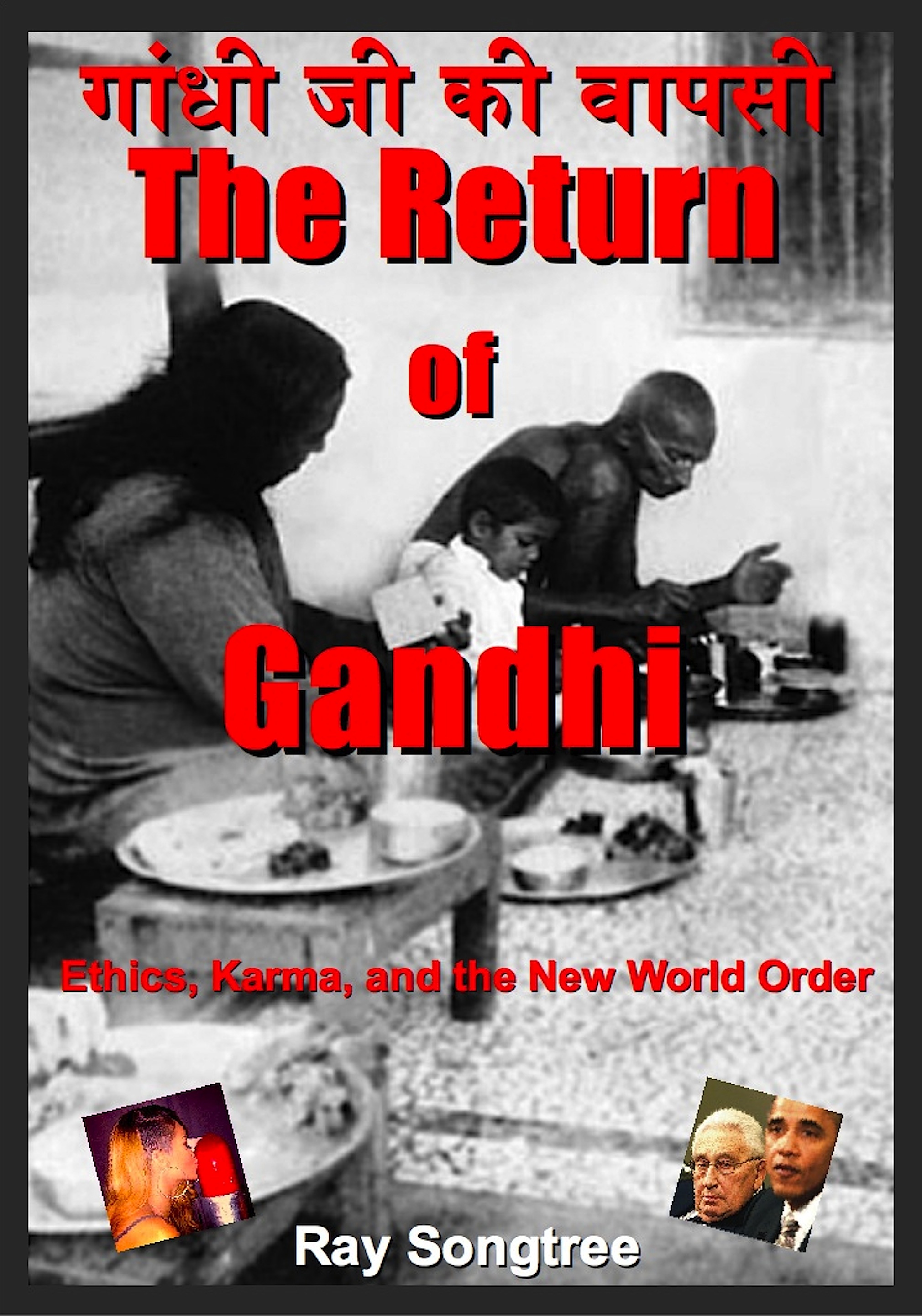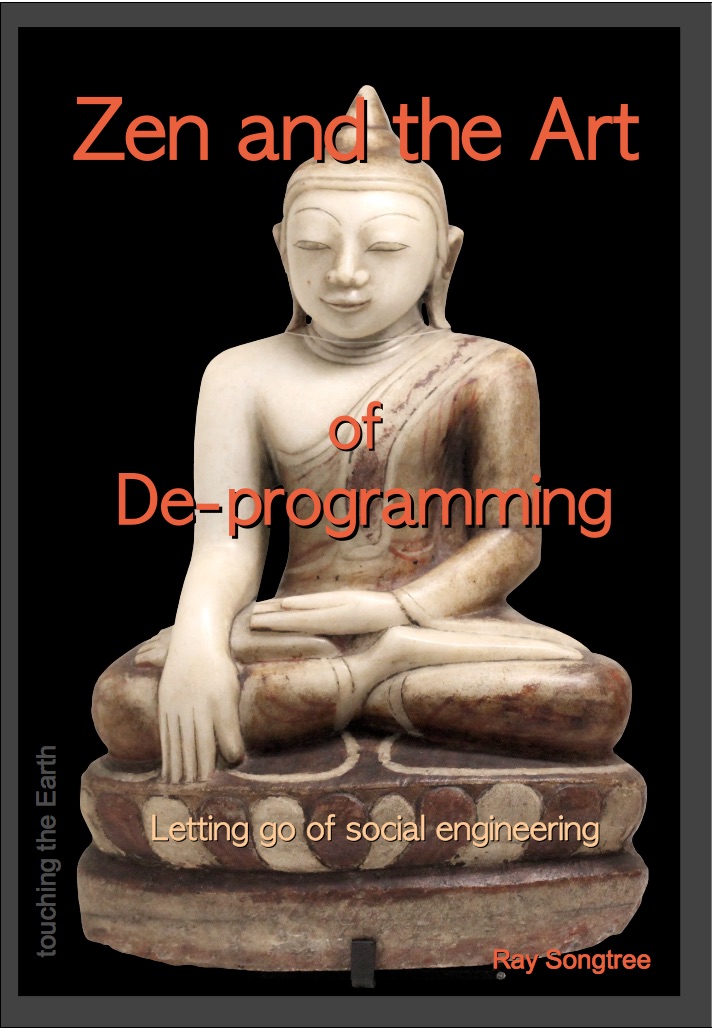mirror for CounterPunch, November 3, 2015 update below.
Is Fukushima Getting Worse?
by ROBERT HUNZIKER
The Fukushima multiple nuclear disasters continue spewing out hot stuff like there’s no tomorrow. By all appearances, it is getting worse, out-of-control nuclear meltdowns.
On June 19th Tepco reported the highest-ever readings of strontium-90 outside of the Fukushima plant ports. The readings were 1,000,000 Bq/m3 of strontium-90 at two locations near water intakes for Reactors 3 and 4. Tepco has not been able to explain the spike up in readings. The prior highest readings were 700,000 Bq/m3. (Source here).
Strontium-90 is a byproduct of nuclear reactors or during the explosion of nuclear weapons, e.g., it is considered the most dangerous component of radioactive fallout from a nuclear weapon (Source: HyperPhysics, Dept. of Physics and Astronomy, Georgia State University). It is a cancer-causing substance because it damages genetic material (DNA) in cells. Strontium-90 is not found in nature. It’s a byproduct of the nuclear world of today, e.g., strontium-90 was only recently discovered, as of August 2014, for the first time ever, by the Vermont Health Department in ground water at the Vermont Yankee Nuclear Power Station (Source here). Coincidentally, Vermont Yankee, as of December 29, 2014, is being shut down.
When a fission chain reaction of uranium-235 or plutonium-239 is active in a nuclear power station containment vessel, it produces a vast array of deadly radioactive isotopes. Strontium-90 is but one of those. So, somewhere in Fukushima Dai-ichih a lot of atoms are splitting like crazy (meanwhile Einstein e=mc2 turns over in his grave) and ergo, a lot of strontium-90 pops out and hangs around for decades upon decades. This is not a small problem.
Which may be why Einstein famously said, “Nuclear power is one hell of a way to boil water.”
For example, a large amount of strontium-90 erupted into the atmosphere from the Chernobyl nuclear explosion (1986), spread over the old Soviet Republics and parts of Europe. Thereby, strontium-90, along with other radioactive isotopes, kills and maims people, a lot of people, to this day, more on this later.
Farming in Fukushima
Because of the Fukushima nuclear meltdown, farmers in the greater area have had a tough go of it. For example, on June 6, 2013 Japanese farmers met with Tepco and government officials, including the official in charge of Ministry of Economy, Trade and Industry (Source here).
The 13-minute video of the farmers’ meeting with officials shows farmers testifying about contaminated food that, “We won’t eat ourselves, but we sell it… I know there is radiation in what we grow. I feel guilty about growing and selling them to consumers.”
Well, sure enough, officials from New Taipei City’s Department of Health (Taipei, Taiwan), and other law-enforcement authorities, seized mislabeled products from Japan. It seems that “more than 283 Japanese food products imported from the radiation-stricken areas near the Fukushima Dai-ichi nuclear disaster were found to be relabeled as having come from other areas of Japan and sold to local customers,” Stephanie Chao, 283 Mislabeled Japanese Food Products Originated Near Fukushima, The China Post, March 25, 2015.
Meanwhile, within a couple of months of the illicit underhanded devious mislabeling incident, Taiwan Enforces Stricter Controls on Japanese Food Imports, J.R. Wu in Taipei and Ami Miyazaki in Tokyo, Reuters, May 15, 2015, as Taiwan draws a line in the sand for Japanese foodstuff.
Not only that but on the heels of Taiwan’s discovery of the mislabeling gimmick, and only three months later, Japan Asks China to Ease Food Import Restrictions Introduced After Fukushima Nuclear Disaster, South China Morning Post, June 25, 2015. Previously, China banned food imports from ten prefectures in Japan, including Miyagi, Nagano, and Fukushima. Now, this past week, Japanese authorities are asking China to remove the restrictions.
Japan would be wise to suggest China first consult with the United States because confidently, audaciously, imperturbably Secretary of State Hillary Clinton allegedly signed a secret pact with Japan within one month of the meltdown for the U.S. to continue importing Japanese foodstuff, no questions asked, Deborah Dupre, Radiating Americans: Fukushima rain, Clinton’s Secret Food Pact, Examiner.com, August 14, 2011.
Meantime, Chancellor Merkel (PhD, physics) ordered a shutdown of nuclear power plants throughout Germany, hmm.
Fukushima and Our Radioactive Ocean according to the Woods Hole Oceanographic Institute, Video- March 2015: “When Fukushima exploded, radioactive gases and particles escaped into the atmosphere. Most fell nearby on land and in the ocean. A smaller amount remained in the air, and within days, circled the globe… in the ocean close to Fukushima, levels of cesium-137 and 134, two of the most abundant radioactive materials released, peaked at more than 50,000,000 times above background levels.”
Nevertheless, according to Woods Hole Oceanographic Institute: “Scientists who have modeled the plume predict that radioactivity along the West Coast of North America will increase, but will remain at levels that are not a threat to humans or marine life.”
To date, based upon actual testing of water and marine life in the Pacific Ocean by Woods Hole, radioactive levels along the North American West Coast remain low, not a threat to humans, not a threat to marine life, so far.
Fukushima and its Ocean Impact, according to Dr. Ken Buesseler, Senior Scientist, Woods Hole Oceanographic Institute, March 11, 2015, cesium uptake in the marine food web is diluted, for example, when Bluefin tuna swim across the Pacific, they lose, via excretion, about one-half of the cesium intake that is ingested in Japanese waters.
Expectantly, there are no commercial fisheries open in the Fukushima-affected areas of Japan. On a continual monitoring basis, no fishing is allowed in contaminated areas off the coastlines.
When contamination levels of fish in Japan are compared to fish along the coast of North America, the levels of radiation are relatively low in Canada and in the U.S. As a result, according to studies by Woods Hole, eating fish from the U.S. Pacific region is okay.
Not only that, but rather than categorical acceptance of U.S. government statements about safety from radiation in ocean currents, Dr. Buesseler established a citizen’s network called “How Radioactive is Our Ocean?” where individuals contribute by voluntarily taking samples. Every sample from the West Coast had cesium-137, but the numbers are low and at levels harmless to humans, thus far.
But, on a cautionary note, Dr. Buesseler is the first one to admit the situation requires constant monitoring.
Woods Hole Oceanographic Institute’s findings are not sufficient to dismiss health concerns for many reasons, among of which Fukushima is white hot with radioactivity, tenuously hanging by a thread, extremely vulnerable to another earthquake or even an internally generated disruption, who knows? It is totally out of control!
The California Coastal Commission issued a report that agrees with the low levels of Fukushima-derived radionuclides detected in air, drinking water, food, seawater, and marine life in California; however, “it should be noted that the long-term effects of low-level radiation in the environment remain incompletely understood….” Report on the Fukushima Dai-ichih Nuclear Disaster and Radioactivity along the California Coast, California Coastal Commission, April 30, 2014.
“The risk of long-term exposure to low-level radiation is unclear. Studies of radiotherapy patients and others indicate that there is a significant increase in cancer risk if lifetime exposure exceeds 100,000 microsieverts, according to the World Health Organization. A person exposed daily to radiation at the high end of the levels now seen at Miyakoji [a village in Fukushima Prefecture] would reach that lifetime exposure level in fewer than 23 years,” Patrick J. Kiger, Fukushima Return: At Nuclear Site, How Safe is Safe? National Geographic, April 2, 2014.
Current Status of Fukushima Nuclear Site, according to Dr. Ken Buesseler of Woods Hole Oceanographic Institution, who travels to Japan to measure radiation levels: The site continues to leak radioactive materials. In fact, release of strontium-90 has grown by a factor of 100 when compared to 2011 levels. In other words, the situation is worsening. One hundred times anything is very big, especially when it is radiation.
Strontium-90 is acutely dangerous, and as it happens, highly radioactive water continuing to spew out of the Fukushima Dai-ichih facilities is seemingly an endless, relentless problem. The mere fact that strontium-90 has increased by a factor of 100 since the disaster occurred is cause for decisive sober reflection. Furthermore, nobody on the face of the planet knows what is happening within the nuclear containment vessels, but apparently, it’s not good. More likely, it’s real bad.
According to Dr. Helen Caldicott: “There is no way they can get to those cores, men die, robots get fried. Fukushima will never be solved. Meanwhile, people are still living in highly radioactive areas,” (Helen Caldicott, Speech at Seattle Town Hall, Sept. 28, 2014.)
Comparison analysis of Three Mile Island (1979), Chernobyl (1986), and Fukushima (2011): The world’s three most recent nuclear disasters are dissimilar in many respects. However, all three are subject to the same adage: “an accident is something that is not planned.” Thus, by definition, in the final analysis, the risk factor with nuclear power is indeterminate. Fukushima is proof.
Three Mile Island’s containment vessel, in large measure, fulfilled its purpose by containing most of the radiation so there was minimal radiation released. As such, Three Mile Island is the least harmful of the three incidents.
By way of contrast, Chernobyl did not have an adequate containment vessel and as a result, the explosion sent a gigantic plume of radioactive material blasting into the atmosphere, contaminating a 70 square kilometer (approximately 30 sq. mi.) region, a “dead zone” that is permanently uninhabitable, forever unlivable.
To this day, tens of thousands of people affected by Chernobyl continue to suffer, and die, begging the question of whether Fukushima could be worse. After all, the incubation period for radiation in the body is 5-to-40 years (Caldicott). As for example, it took 5 years for Chernobyl children to develop cancer (Caldicott), and Fukushima occurred in 2011.
“Fukushima is not Chernobyl, but it is potentially worse. It is a multiple reactor catastrophe happening within 150 miles of a metropolis of 30 million people,” claims John Vidal. Whereas, Chernobyl was only one reactor in an area of 7 million people.
John Vidal, environmental editor, The Guardian newspaper (UK), traveled to Chernobyl: “Five years ago I visited the still highly contaminated areas of Ukraine and the Belarus border where much of the radioactive plume from Chernobyl descended on 26 April 1986. I challenge chief scientist John Beddington and environmentalists like George Monbiot or any of the pundits now downplaying the risks of radiation to talk to the doctors, the scientists, the mothers, children and villagers who have been left with the consequences of a major nuclear accident. It was grim. We went from hospital to hospital and from one contaminated village to another. We found deformed and genetically mutated babies in the wards; pitifully sick children in the homes; adolescents with stunted growth and dwarf torsos; fetuses without thighs or fingers and villagers who told us every member of their family was sick. This was 20 years after the accident, but we heard of many unusual clusters of people with rare bone cancers… Villagers testified that ‘the Chernobyl necklace’ – thyroid cancer – was so common as to be unremarkable,” John Vidal, Nuclear’s Green Cheerleaders Forget Chernobyl at Our Peril, The Guardian, April 1, 2011.
There’s more: “Konstantin Tatuyan, one of the ‘liquidators’ who had helped clean up the plant [Chernobyl], told us that nearly all his colleagues had died or had cancers of one sort or another, but that no one had ever asked him for evidence. There was burning resentment at the way the UN, the industry and ill-informed pundits had played down the catastrophe,” Ibid.
And still more yet: According to “Alexy Yablokov, member of the Russian Academy of Sciences, and adviser to President Gorbachev at the time of Chernobyl: ‘When you hear no immediate danger [from nuclear radiation] then you should run away as far and as fast as you can’… At the end of 2006, Yablokov and two colleagues, factoring in the worldwide drop in births and increase in cancers seen after the accident, estimated in a study published in the annals of the New York Academy of Sciences that 985,000 people had so far died and the environment had been devastated. Their findings were met with almost complete silence by the World Health Organisation and the industry,” Ibid.
The environment is devastated and almost one million dead. Is nuclear power worth the risks? Chancellor Merkel doesn’t seem to think so.
Of the three major nuclear disasters, Fukushima has its own uniqueness. The seriousness of the problem is immense, far-reaching, and daunting as its containment vessels are leaking radioactivity every day, every hour, every minute. How to stop it is not known, which is likely the definition of a nuclear meltdown!
The primary containment vessels at Fukushima may have prevented a Chernobyl-type massive release of radioactivity into the atmosphere in one enormous explosion. Even though, Fukushima did have four hydrogen explosions in the secondary containment structures, and as previously mentioned, according to Woods Hole Oceanographic Institute, “When Fukushima exploded… levels of cesium-137 and 134, two of the most abundant radioactive materials released, peaked at more than 50,000,000 times above background levels.”
But, more significant, troublesome, and menacing the primary containment vessels themselves are an afflictive problem of unknown dimension, unknown timing, unknown levels of destruction, as the nuclear meltdown left 100 tons of white-hot radioactive lava somewhere, but where?
“Hell is empty and all the devils are here,” William Shakespeare The Tempest.
Postscript: “Quietly into Disaster” is an alluring, exquisite, handsome full-length film that examines the consequences of nuclear fission, Produced by: Holger Strohm, Directed by Marcin El. http://holgerstrohm.com/?q=node/136
Robert Hunziker lives in Los Angeles and can be reached at roberthunziker@icloud.com
Fukushima Gets A Lot Uglier
Posted By Robert Hunziker On November 3, 2015

As time passes, a bona fide message emerges from within the Fukushima Daiichi Nuclear Power Plant disaster scenario, and that message is that once a nuclear power plant loses it, the unraveling only gets worse and worse until it’s at its worst, and still, there’s no stopping it. Similar to opening Pandora’s box, there’s no stopping a ferocious atom-splitting insanity that knows no end.
Four years of experience with Fukushima provides considerable evidence that splitting atoms to boil water is outright unmitigated madness. After all, nuclear power plants are built to boil water; yes, to boil water; it’s as simple as that, but yet at the same time it’s also extraordinarily complex. Conversely, solar and wind do not boil water and are not complex and never deadly (Germany knows).
As it unfolds, the Fukushima story grows more convoluted and way more chilling. For example, according to The Japan Times, October 30th Edition: “Extremely high radiation levels and the inability to grasp the details about melted nuclear fuel make it impossible for the utility to chart the course of its planned decommissioning of the reactors at the plant.”
Thereby, the bitter truth behind a major nuclear meltdown shows its true colors: “Impossible for the utility to chart the course of its planned decommissioning…” is very definitive, divulging the weak underbelly of the fission-to-heat process; only one slip-up, and it’s deadly dangerous and likely out of control!
Not only that, but the entire Fukushima Daiichi Nuclear Power Plant complex is subject to recurring mishaps and setbacks, as well as various technical tribulations, something different going wrong on any given day. And, it’s always big, never small.
For example, according to The Japan Times, October 30thEdition: “Deadly 9.4 Sieverts Detected Outside Fukushima Reactor 2 Containment Vessel; Checks Stop.”
TEPCO also detected deadly radiation levels outside of reactor No. 1. According to a direct quote from the article: “People exposed to the maximum radiation dose for some 45 minutes will die.” Death in 45 minutes!
The potency contained within 9.4 Sieverts (Sv) is enormous. One Sievert, which is a measure of the health effect of radiation on the human body, is normally considered a massive dose, causing immediate radiation sickness. But, since levels beyond one Sievert are rarely, if ever, encountered in the normal course of everyday life, the industry standard uses millisieverts (mSv = 1/1000th) or microsieverts (uSv = one millionth of a Sievert) when measuring radiation.
Miserably, eight (8) Sieverts causes severe vomiting, severe headache, severe fever, incapacitation, and a 100% death rate over a period of time greater than 10 minutes within 48 hours (Radiation Survival Guide).
Chernobyl is a prime example of the potency of radiation. Immediately after the explosion (1986), radiation levels in the control room reached 300 Sv/hr, resulting in the deaths of the operators of the plant. Thirty years later, radiation levels in the same control room run approximately 8-10 mSv/hr.
It’s little wonder TEPCO finds it impossible to plan decommissioning of the Fukushima Daiichi Nuclear Power Plant, which begs the question of if, and when, decommissioning will be possible. Who knows, if ever?
Furthermore, according to The Japan Times’ article: TEPCO planned to start checking inside the containment vessel in August by use of a remote-controlled robot but “high radiation levels have stalled the examination.”
Unfortunately, not only is radiation sizzling outside of reactor No. 1, but a pipe connection at reactor No. 2 also shows extremely high radiation levels. Reactor No. 2 is where the hot melted radioactive core (corium) still has not been located. But, then again, with so much hot stuff sizzling throughout the entire Fukushima complex, how are workers expected to locate a melted nuclear core that may have already penetrated the steel-reinforced concrete containment vessel, entering the earth?
If total meltdown occurred/occurs, nobody has any idea of what to do next. There is no playbook. It’s likely impossible to do anything remedial once a melted nuclear core has burrowed into the ground because deadly isotopes uncontrollably spread erratically, ubiquitously into the surrounding underground soil and water. Then what?
In the final analysis, there is a distinct probability that Fukushima has no final analysis. Reports out of Japan indicate that Fukushima Daiichi Nuclear Power Plant cleanup and decommissioning is severely restricted by extremely high radiation levels and the inability to grasp the details about melted nuclear fuel. What could be worse? Keep reading.
Footnote: China plans on building 400 nuclear plants “fast and cheap” over the next few decades. (Source: Oliver Tickell, Does China’s Nuclear Boom Threaten Global Catastrophe? CounterPunch, Oct. 30th.) Answer: YES!
Article printed from www.counterpunch.org: http://www.counterpunch.org
URL to article: http://www.counterpunch.org/2015/11/03/fukushima-gets-a-lot-uglier/





Please go to the link at at the bottom of this article, and click on the link to the doco and watch it….very revealing, educational, scary!! Most of life is being impacted on an increasing level by this techno-insanity!
It is awesome video, now posted as visible youtube. It has information I’ve never heard before, and I have to say, more dire and more incrementing.